In 1913, the US Postal Service introduced parcel post service. Customers took advantage of the new expanded regulations to mail things like eggs, live bees, harmless live animals, produce, and even an entire building, one brick at a time. The most unusual deliveries occurred between 1910 and 1920, as numerous customers mailed children via parcel post. In 1920, this practice was officially banned (though we found a few instances where it occurred after this date). We’ve combed our archives to find special deliveries that made the news.
Shortly after parcel post was introduced, parents in rural Ohio sent their baby boy with the mail carrier to visit nearby relatives.
Initially, sending children through the mail only occurred with rural carriers well-known by the families sending their precious packages. But as the practice extended, some children traveled greater distances.
In 1914, the San Francisco Examiner published tongue-in-cheek instructions about how mail clerks should care for their special deliveries.
Immigration officials sometimes used parcel post services to reunite immigrant children with their families.
The first attempts to stop the practice of mailing children came in 1914 when mail officials in Montana said they would no longer accept “parcels of humanity.”
Cincinnati postal officials also protested the practice in 1915.
Postal officials across the country began refusing to accept children in parcel post. Some incurred the wrath of angry parents who demanded the right to mail their children. Finally, in 1920, the Postmaster General ruled that children could no longer be sent through the mail.
To explore more news from the early days of the parcel post system and read more about children who were shipped via parcel post, search Newspapers.com™ today!



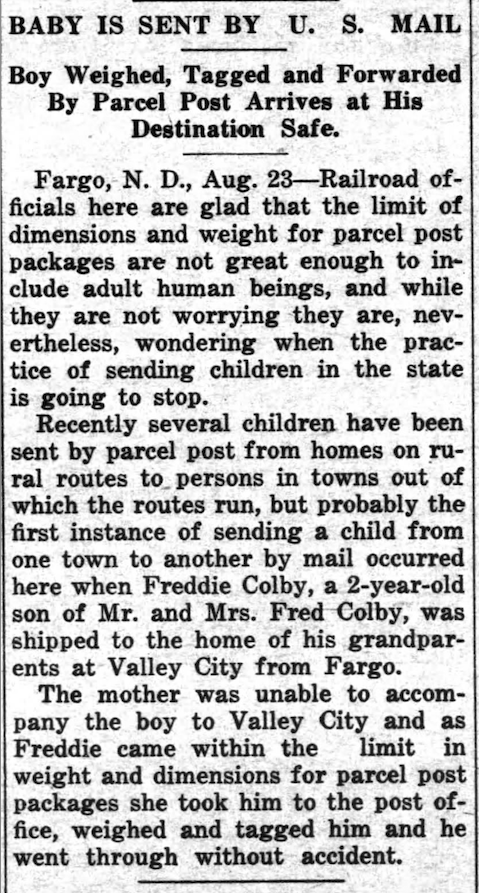
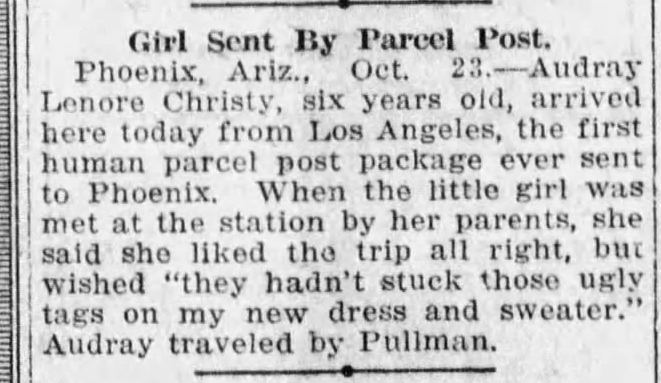
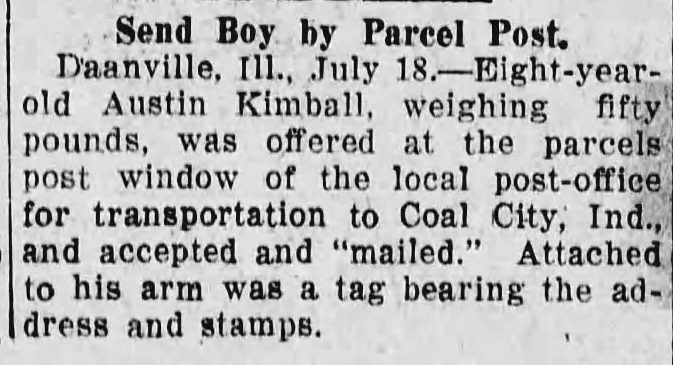
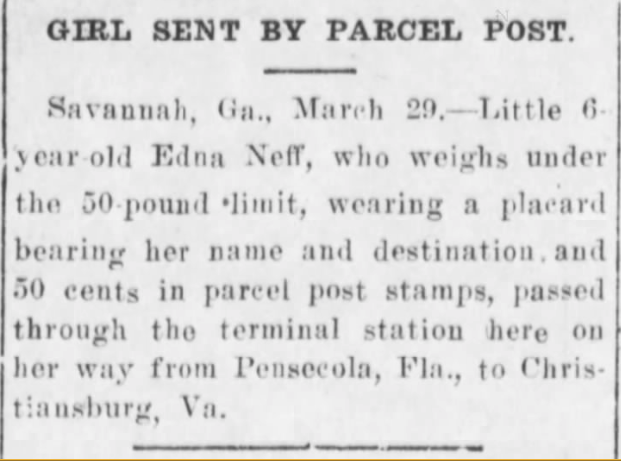
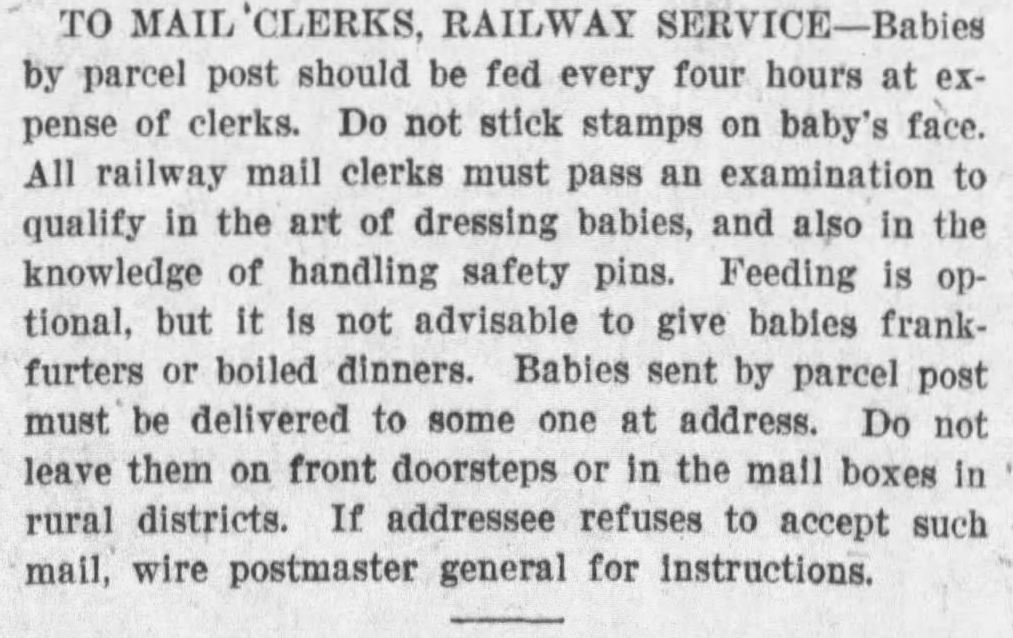
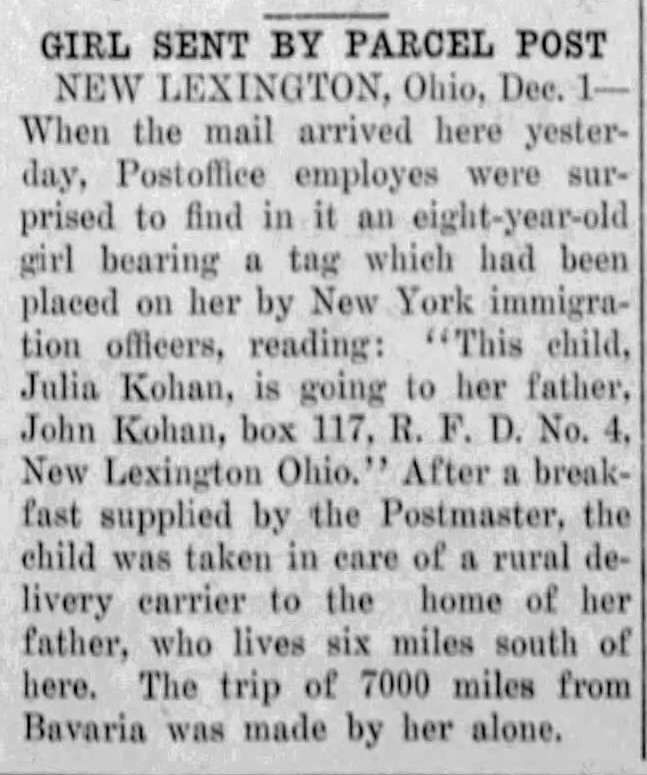
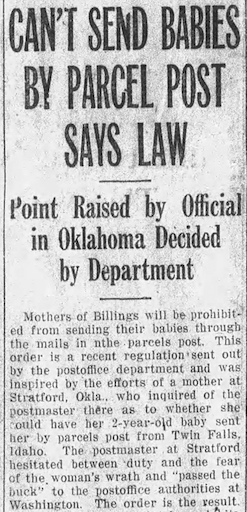
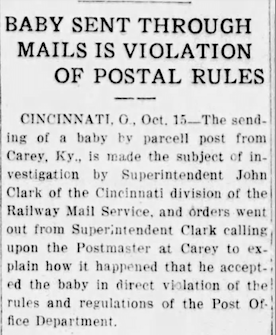
Sometime a little later (1930s) by hometown in Ohio (Tippecanoe City) had to change its name because of the mix up in the US Mail. There was another small town by the same name, This was before the invention of Zip Codes. According to my Grandfather, his family lost a bushel of apples because they were shipped to the other Tippecanoe City. The apples were rotten when they were finally arrived at the other town. I think this was a common problem. About 1936, my hometown changed its name to Tipp City (45371) which it is still called today.
It takes articles like this to remind us that life isn’t as “bad” now as so many people may think! I cringe thinking of what happened to some of those children in transit.
I can’t get over the thought of children being sent in the mail. My husband worked for the post office, over 30 years,I don’t think he even knew about this. His father also worked for the post office. I’m learning a lot about things they did back in the early 1900s.like people that lived in apartment buildings had theses cages that hung out there window’s that they put there babies in so they could get fresh air and sunlight. I took one look at it and said these people are nuts. Child abuse now days. Some of theses cages where 3 to 4 floors up.
Yup, back when America was great.
It was, and in some ways still is. That doesn’t mean it was (or is) perfect.
I’m surprised that the Postal Service didn’t come up with specialty stamps for this practice, not unlike the rare Graf Zeppelin stamps for sending airmail to Europe via Zeppelins. I could imagine they’d be as insanely collectable, as well.
I’ve often read in older English literature of people, “traveling by post”. It seemed to be a common early form of public transportation. I imagine people just paid to ride in the postal carriage along its route. I wonder if this established practice could have influenced the parents in these articles in sending their children by post.